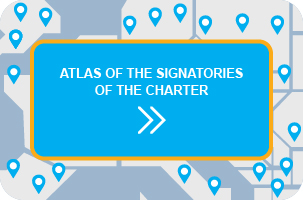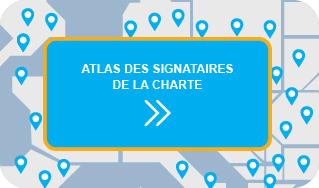Equality between women and men is one of the European Union’s founding values. It goes back to 1957 when the principle of equal pay for work of equal value became part of the Treaty of Rome. Over the past few decades, the EU has notably worked for:
- Equal treatment legislation;
- Gender mainstreaming (integration of a gender perspective into all policies);
- Specific measures for the advancement of women.
2020-2025
With the renewal of the EU institutions following the European elections in 2019, the issue of gender equality made it back on to the political agenda with strong support from the first-ever female Commission President, Ursula von der Leyen, and the creation of a dedicated Commissioner for Equality, Helena Dalli. In her political guidelines for the European Union, Von der Leyen indicated that “equality for all and equality in all its senses” was one of the major priorities of her Commission.
On 5 March 2020, the European Commission published “A Union of Equality: Gender Equality Strategy 2020-2025”, as one of a series of EU initiatives and strategies concerning equality, diversity and inclusion that the Commission will adopt and enact as part of delivering on its headline ambitions “A stronger Europe in the world” and “A new push for European democracy”.
The European Commission’s proposed 2020-2025 Gender Equality Strategy aims at “achieving a gender equal Europe where gender-based violence, sex discrimination and structural inequality between women and men are a thing of the past. A Europe where women and men, girls and boys, in all their diversity, are equal.” It is structured around six themes:
- Being free from violence and stereotypes
- Thriving in a gender-equal economy
- Leading equally throughout society
- Gender mainstreaming and an intersectional perspective in EU policies
- Funding actions to make progress in gender equality in the EU
- Addressing gender equality and women’s empowerment across the world
A dual approach will be taken in implementing the Strategy that combines gender mainstreaming with specific targeted actions to achieve gender equality. It is also the first time that an EU Strategy aims to integrate an intersectional perspective[1] in its implementation.
Gender Equality Strategy Factsheet – Striving for a Union of Equality: The Gender Equality Strategy 2020-2025
[1] According to the 5 March Communication, the Commission understands this as “the combination of gender with other personal characteristics or identities, and how these intersections contribute to unique experiences of discrimination”. The European Institute for Gender Equality (EIGE) defines ‘intersectionality’ as an “analytical tool for studying, understanding and responding to the ways in which sex and gender intersect with other personal characteristics/identities, and how these intersections contribute to unique experiences of discrimination” (see: https://eige.europa.eu/thesaurus/terms/1263)
2016-2019
The Strategic Engagement for Gender Equality 2016-2019 established the Commission’s work programme in terms of gender equality for the 2016-2019 period. It is a comprehensive framework outlining the Commission’s commitments to promote gender equality in all its policies as well as into EU funding programmes. The Commission defined the following priority areas for action:
- Equal economic independence for women and men;
- Equal pay for work of equal value;
- Equality in decision-making;
- Dignity, integrity and ending gender-based violence; and
- Promoting gender equality beyond the EU.
The strategic engagement highlighted the contribution of gender equality to economic growth and sustainable development and corroborated the 2011-2020 European Pact for gender equality. It built on the priorities and experiences of the Strategy for equality between women and men 2010-2015.
The annual progress report for the Strategic Engagement can be found here.
Since 1983, the Council of European Municipalities and Regions (CEMR) works actively to promote equality between women and men in the decision-making process.
The structuring of the action of CEMR’s women elected representatives
In 1983, two hundred women representatives of European municipalities, provinces and regions met on the occasion of the first “Meeting of women local and regional elected representatives of the European Community” organised by CEMR in order to allow for the debating of the “Renewal of European Society” over a period of three days.
By emphasizing the principle according to which local and regional authorities have a primordial role to play in ensuring a balanced development of the European Community, women elected representatives insisted on three points: the participation of European women in local and regional assemblies, the actions carried out by the European Institutions to promote equal opportunities and the impact of Community policy on local and regional authorities.
The second meeting, in 1986 was held in Saint Jacques de Compostelle, a city that was chosen since the women representatives’ desired to take action by standing by their Spanish and Portuguese counterparts at the time of their countries’ joining the European Community. Several subjects of concern fostered their discussions: for example, supporting the Community’s 1986-1990 programme in favour of equal opportunities and the need for actions vis-à-vis the governments in view of the adoption of new directives relating to the equal treatment of men and women in their professional lives. The women elected representatives also requested that the Community, in its transformation into the European Union, incorporate the principle of equal opportunities for men and women into the new Treaty on European Union.
The British Delegation, with the support of two key women in CEMR’s actions for equality, Baroness Farrington of Ribbleton and Doreen Fleming, submitted a resolution providing for the creation of a structure within CEMR which would allow for the monitoring and the support of the policies of the European Communities’ Commission as well as the actions of the European Parliament’s Commission on Women’s Rights in favour of equality.
More than 150 women local and regional elected representatives met in Antwerp in 1988, on the occasion of the third meeting organised under the theme “the responses of European local and regional authorities faced with the challenges of contemporary society”. Women representatives also highlighted, as was the custom at these meetings, local problems, in particularly violence in the cities, the integration of migrant women and initiatives aimed at youth.
The 4th meeting in Heidelberg in 1992, was above all significant in light of the creation of the standing CEMR Committee of women elected representatives of local and regional authorities with the mission to increase the presence of women in politics and to promote their role in European construction. Through this committee, women representatives from different European countries have the opportunity to discuss their respective national situations, to exchange their experiences in view of transferring best practices in terms of equality and to monitor the evolution of European policies in this area.
The launching of actions aimed at Central and Eastern Europe
In the beginning of the 1990s, the members of CEMR’s Committee of women elected representatives of local and regional authorities placed importance on the need to establish contacts with the women elected representatives of the Central and Eastern European countries in view of their future membership in the EU. The different meetings organised between 1994 and 1998 played a decisive role in opening this dialogue.
The Dublin Conference in 1995 was a pivotal step for the women local and regional elected representatives of CEMR. The conference coincided with the setting up of the Committee of the Regions, a European representative body of local and regional authorities, instituted by the Maastricht Treaty. The women elected representatives of CEMR worked hard to raise the awareness of the members of this institution with regard to the question of respect for equal opportunities. Following an ad hoc resolution, a working group was created. This working group drew up recommendations aiming to strengthen the presence of women within the national delegations of the Committee of the Regions named by the governments, as well as to ensure a monitoring of the dimension of equal opportunities in the opinions adopted by this institution.
Creation of a European network of women elected representatives of local and regional authorities
At the 20th General Assembly of European Municipalities and Regions in Thessaloniki in May.
1996, CEMR’s Committee of women elected representatives launched a European Network of women local and regional elected representatives in order to improve the exchange of information and best practice in favour of equality at local level in Europe.
This network, made up of nearly 1600 women elected representatives from 34 European countries set up information tools for elected representatives on local level, organised seminars on “the presence of women in local politics”, in view of the local elections taking place in the host countries a research on the presence of women in politics, particularly at local level in different EU countries, was also conducted. This research enabled, for the first time, specific data to be assembled on women’s participation in local politics in Europe.
At occasion of the Executive Bureau meeting held in Sintra in 2000, a resolution was adopted; recommending that a regular evaluation be undertaken on the application of the principle of the equality of men and women within CEMR, its national associations and member local and regional authorities.
At the 21st General Assembly of European Municipalities and Regions in Oulu in 2000, local and regional representatives approved a strategic action plan for governance and equality which constituted a genuine framework for achieving a balanced representation of men and women within local and regional authorities, the CEMR member national associations and the governing bodies of the organisation.
European and International inroads
The turn of the century brought to light CEMR’s political commitment in favour of equality on the international scene. In June 2000, a CEMR delegation of women local and regional elected representatives participated in the Beijing+5 Conference organised by the United Nations in co-operation with IULA. The European women local and regional elected representatives were able to share their experiences of local life in Europe with their counterparts from all over the world and speak of the results achieved in this area as well as persisting barriers.
Five years after the World Conference on Women in Beijing, at which time a Platform for Action for the development of the status of women was launched, the New York Conference provided the opportunity to assess the progress accomplished since then. The theme of the 23rd Special Session of the United Nations General Assembly was therefore “Women 2000: gender equality, development and peace for the twentyfirst century”. At the close of this event, the role of local authorities was recognised in the action plan for the implementation of Beijing+5.
From “The town for Equality” to the European Charter for Equality of women and men in local life
The objective of “The town for equality” was to depict, with the help of CEMR’s network, a virtual portrait of a town that takes gender equality into account in all of its policies. The results of the project, which led to the organisation of several seminars involving elected representatives, local officials and representatives from civil society, were published in the “The Town for Equality, a guide of methodology taking into account the best practices in Europe on this subject. Once town for equality was virtually established, local and regional authorities were encouraged to take a step in this direction through a political commitment. “The European Charter for the equality of women and men in local life” was the resulting project.
For further information: 25 years of actions towards equality in Europe
Current work
The CEMR Standing Committee for Equality and the expert group on gender equality prepared a gender equality position paper and action plan (adopted in June 2018) to guide the work of the Observatory of the 2018-2020 period.
“Local equality: Going the distance to achieve gender equality” is available for download here.
How was the European Charter for Equality of Women and Men in Local Life born?
In 2004, the European Commission supported an ambitious project initiated by the Council of European Municipalities and Regions (CEMR): the elaboration of a portrait of a virtual town in which gender equality is fully achieved.
By identifying examples of various methods put in place, CEMR provided a concrete tool for local and regional authorities on how they could work with equality. The result of the project was the publishing of the brochure the Town for Equality gathering examples of good practices from around one hundred European cities and communities in eleven of their fields of expertise.
During the project, it became clear, that there was a lack of expertise and of instruments enabling the setting up of global gender equality policies at local and regional level.
Once the Town for Equality was virtually established, CEMR wished to encourage local and regional governments to take a further step in making this reality by making a political commitment. This is how the idea of establishing the European Charter for Equality of Women and Men in Local Life was born.
The Charter was launched in 2006 within the framework of a project (2005-2006) supported by the European Commission, through its 5th Community Action Programme for equality between men and women.
In 2022, CEMR and its member associations undertook the task of updating the Charter text to ensure its continued utility and relevance for Europe’s towns and regions. The amended and expanded text was adopted by CEMR’s Policy Committee on 6 December 2022.
Find out about the update and what it means for existing and future Charter signatories HERE.
What is the Charter?
The Charter was drawn up by CEMR in collaboration with the project partners and its national associations. The outcome of the Charter reconciles different visions of equality in Europe and compiles a summary of the proposals of all the contributors (hundreds of local and regional representatives). Moreover, the Charter takes into account the different competences of local and regional authorities in Europe.
By signing the Charter, local and regional actors make a strong and formal public commitment to the principle of equality and are encouraged to implement policies and concrete actions in cooperation with institutions and organisations in their territories.
The Charter is a public instrument laying down rights, but it is not binding. CEMR is aware that it is very demanding work to reach all the objectives outlined in the Charter, that’s why, CEMR recommends signatories to implement the Charter progressively and identify priority fields for intervention.
In 2022, CEMR and its member associations undertook the task of updating the Charter text to ensure its continued utility and relevance for Europe’s towns and regions. The amended and expanded text was adopted by CEMR’s Policy Committee on 6 December 2022. We invite you to consult this note that explains the update and what it means for existing and potential signatories.
Part I of the Charter introduces the six fundamental principles:
- Equality of women and men constitutes a fundamental right
- To ensure the equality of women and men, multiple and intersecting forms of discrimination and disadvantage must be addressed
- The balanced participation and representation of women and men in decision-making is a precondition of a democratic society
- The elimination of gender stereotypes is fundamental to achieving equality of women and men
- The integration of the gender perspective into all local and regional government activity is indispensable to advancing equality of women and men
- Properly conceived and funded action plans and programmes are essential tools in advancing equality of women and men
Part II describes the specific steps which should be carried out by the signatories in order to implement the provisions of the Charter.
Part III presents the 39 articles by areas of local/regional competence:
- Democratic accountability
- Political role
- General framework for equality
- The employer role
- Public procurement and contracts
- Service delivery role
- Planning and sustainable development
- Regulator Role
- Twinning and international co-operation
Articles 31-39, added in 2022, address topics that touch on a variety of competences; they are presented in an expanded section which follows ‘Twinning and international cooperation’.
A signatory adhesion form is available on the last page of the Charter. Once adopted and signed, it shall be sent to the Council of European Municipalities and Regions and to the relevant national association (more information available in the Sign the Charter section).
The full text of the Charter is downloadable in PDF in 28 languages, including an Easy-to-read English version:
The Charter is addressed to all the local and regional authorities in Europe who wish to engage in the promotion of equality between women and men in their territory as a part of a coherent and ambitious strategy.
As of January 2023, 2,000 signatories in 36 countries have been identified by the Council of European Municipalities and Regions and its national associations.
If your local/regional authority already signed the Charter, contact the Secretariat of the Observatory to get your access codes and add your data in the Atlas of Signatories.
If your local/regional authority wishes to sign the Charter, consult the Sign the Charter section to know the procedure.











